How to do Subdomain SEO without Jeopardizing Your Rankings
Imagine organizing your website content into distinct sections or promoting additional services separately but under the same domain name. Although subdomains could be the best solution in each situation, you need to know how they work and how to do SEO for subdomains correctly.
Download our free ebook to learn how AIOs changed after rollout and sign up to SE Ranking’s news and SEO tips digests!
Click the link we sent you in the email to confirm your email
-
Search engines treat subdomains as separate entities and require unique search engine optimization strategies and content optimization.
-
Subdomains are good for regional content, distinct business lines, or specialized sections like blogs or ecommerce platforms. They organize large volumes of data and target specific audiences.
-
Subdomains are a great opportunity to target keywords that your main domain might not cover. They prevent keyword cannibalization and improve visibility.
-
Subdomains are separate entities that need distinct backlink profiles because links to the main domain don’t transfer authority to subdomains.
-
Subdomains offer a safe environment to test new CMSs, designs, or content without hurting the primary site’s performance in search results.
-
Each subdomain needs separate sitemaps and robots.txt files for proper indexing.
What is a subdomain?
A subdomain is a subset of your website that organizes or divides your content into distinct sections. It’s a subdivision of a larger domain name in the Domain Name System hierarchy.
The DNS hierarchy arranges these sections into a tree-like hierarchical structure: from the main domain to the subdomains:
- Top-Level Domain (TLD): This is the main domain. There are many of them, including .net, .org, .edu, .gov, and regional ones like .it, .uk, .es, etc.
- Second-Level Domain (SLD): This is your website’s unique name. It can be your company name or a combination of words describing it or the services you provide.
- Third-Level Domain: This is a subdomain. It can have any custom name: blog., help., store., online., etc.

Search engines treat subdomains as separate entities rather than parts of the main domain. This means a subdomain has its own domain authority and requires individual optimization.
If you already have a registered domain, you can create a subdomain through your web hosting control panel. You’ll also need to specify the main domain to associate your subdomain with. Don’t forget to update your registration and note that you’re creating a 3rd-level domain.
What are the differences between subdomains and subdirectories?
Subdomains exist as separate websites from the main domain. They are often used for distinct content areas or purposes. For example, help.seranking.com. In this case, help is the site’s subdomain. Subdomains always appear before the domain name.
Subdirectories, in contrast, are folders under the main domain. These share the primary domain’s authority and SEO benefits. One example of this is seranking.com/blog. For this URL, blog is a subfolder or subdirectory where blog posts are organized under the same domain hierarchy. The subfolder is a section of the main URL path.
A recent research study by GA Agency and SE Ranking showed that subdirectories are the second most popular website structure. They account for over 20% of top three ranking positions. Subdomains make up only 3% of domain structures in SERPs and usually rank high in multilingual markets.
SEO strategy for subdomains
Your subdomains and primary domain are different websites. This defines your entire subdomain SEO strategy. Poor planning here can result in duplicate content issues, with your subdomains competing with your main domain. This can cause you to lose valuable search engine traffic, so make sure you set a clear plan for building SEO-friendly subdomains.
Content strategy
If the domain and subdomain have identical text, this is considered duplicate content. Don’t create a subdomain if you don’t have enough unique content or if it’s too similar to what’s already on the main domain.
You can use SE Ranking’s tools to audit your content. The Issue Report in our Website Audit tool, for example, has a separate tab dedicated to Content. It displays a list of pages with duplicate texts. You can also use the On-Page SEO Checker to check how unique your page content is. Another essential tool for content optimization is our Plagiarism Checker, which is built into our Content Editor.
To reduce common content duplicates (e.g., landing page presenting a product for different regions), use rel=”canonical” to display the page being prioritized. After properly creating a new page on your subdomain, interlink it with your domain.
Another critical point to consider when crafting your subdomain content strategy is that your subdomains should target keywords that your main domain doesn’t. This requires quality keyword research. We recommend using SE Ranking’s Keyword Suggestion tool to search for terms with high SEO potential and explore thousands of relevant keywords to expand your keyword list with.
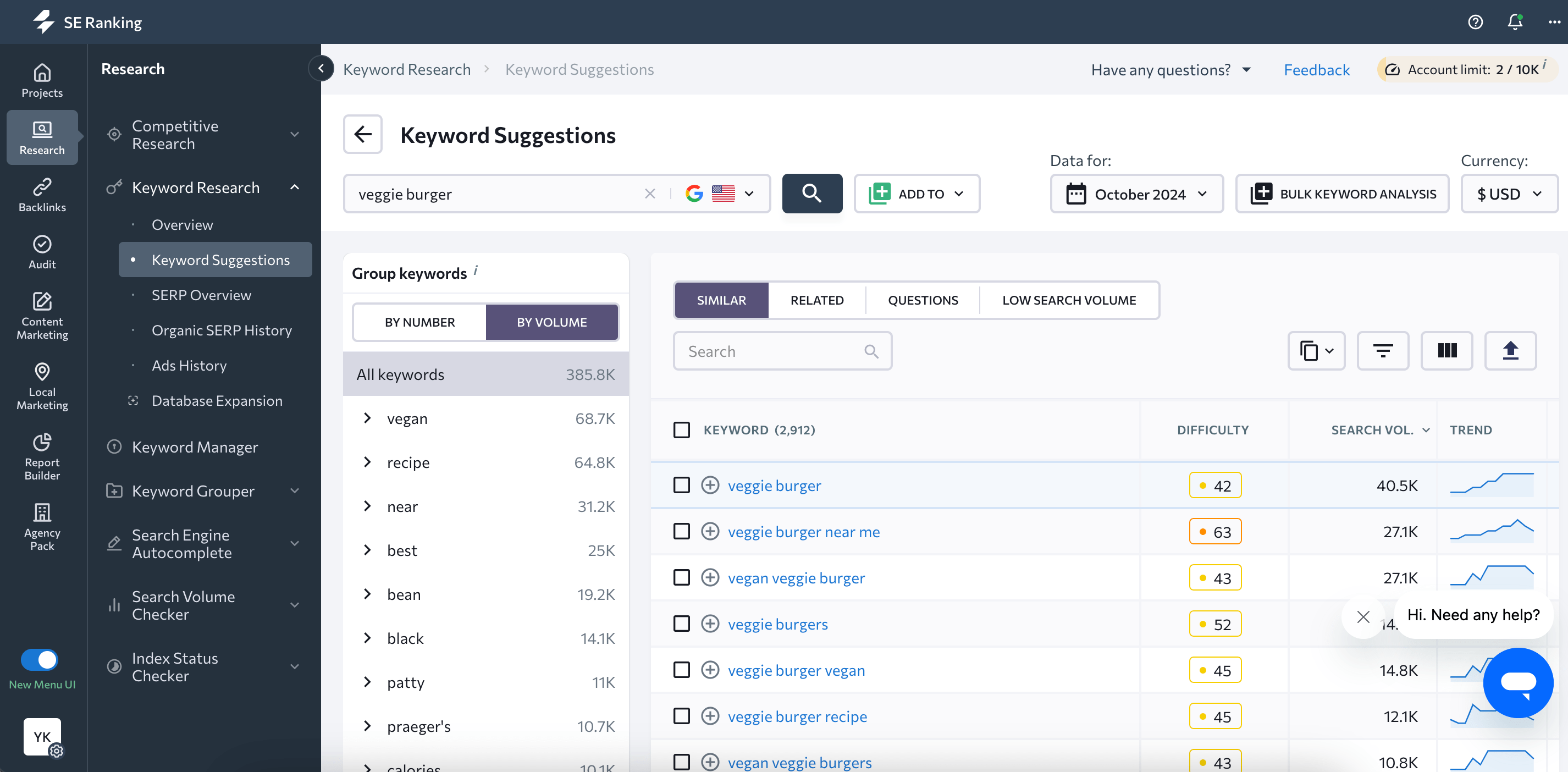
Backlink strategy
Remember that subdomains are a distinct entity from your main domain. This means you’ll have to build a different backlink profile from scratch to increase your subdomain’s visibility and authority. Your main domain’s backlinks will not count as part of your subdomain’s backlink profile.
Your subdomains can sometimes differ dramatically from your main domain and make it pointless to copy your backlink strategy for your main domain. Subdomains are usually created for independent projects and specific product types, which explains why subdomains need backlinks from thematically different sources (referring domains) than main domain.
Use SE Ranking’s Backlink Checker to review your subdomain’s current backlink profile, find link-building opportunities, and investigate your competitors’ backlinks to find gaps in your strategy.
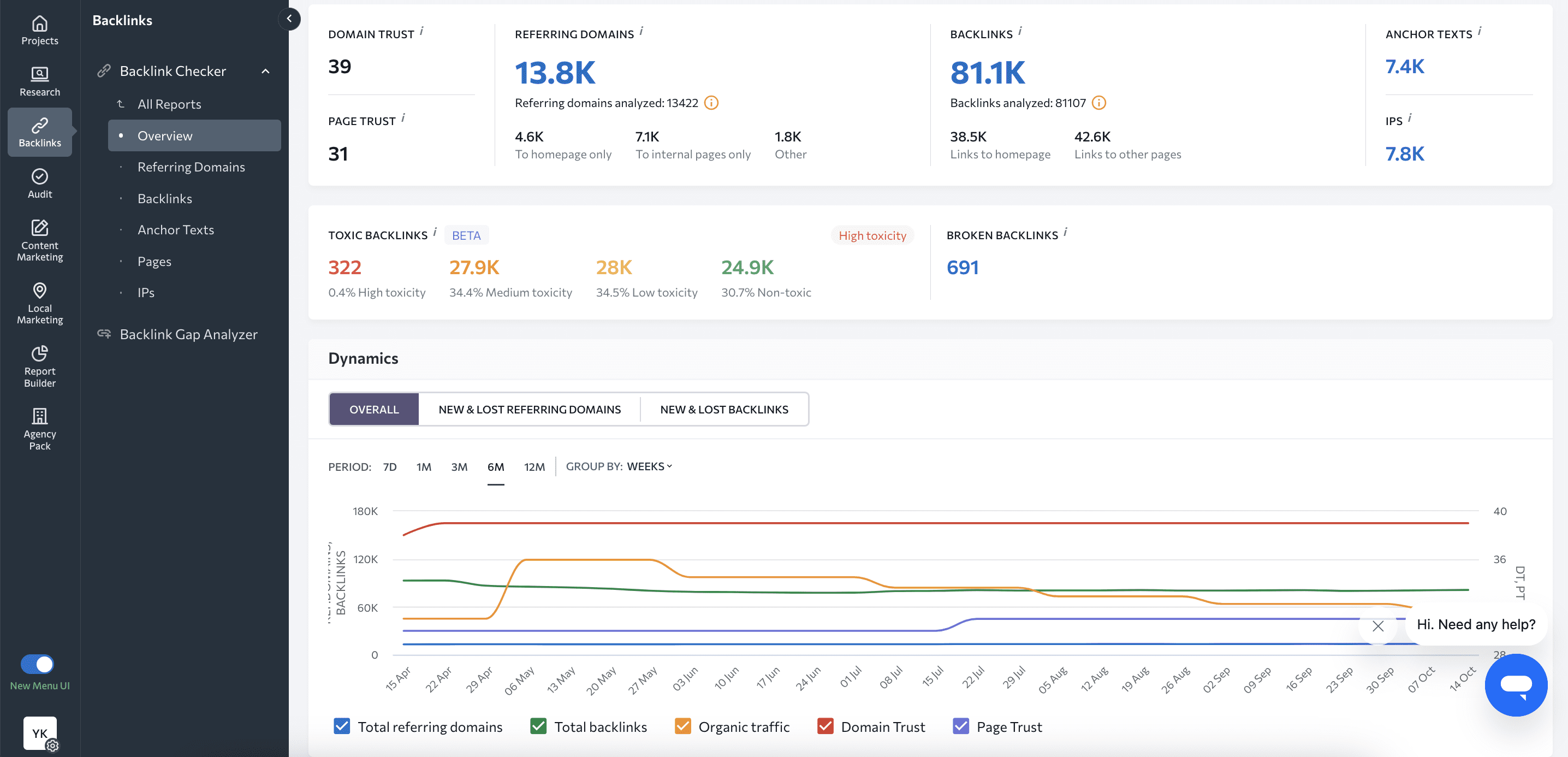
Domain and subdomain linking
Building links from your main domain to subdomain can increase your primary website’s authority. Despite being separate entities, subdomains are naturally associated with the root domain, and this connection adds weight to it.
We mentioned earlier that backlinks on authoritative, trustworthy websites are considered high-quality. Google will register a subdomain when it has solid authority and links to the main domain, and vice versa.
This transfers part of the PageRank and link juice from the subdomain to the main domain, and vice versa, increasing its authority, improving overall visibility, and boosting rankings in SERPs.
Linking your main domain and subdomain is a great way to increase user engagement and traffic. Visitors who find your subdomain helpful are more likely to explore your main domain, driving more traffic and improving engagement rates.
Tech nuances
Here are some important things to consider regarding the technical side of subdomains and SEO:
- Each subdomain requires different robots.txt files. Configure them correctly to guide search engine bots on which pages to index or ignore. Keep in mind that your www. robots.txt file won’t work for other subdomains or the main domain.
- Each subdomain requires separate XML maps. This helps search engines index all of the subdomain’s pages properly.
- If you have subdomains in different languages, add the hreflang attribute to indicate which language each subdomain is intended for.
- To help Google index your subdomains faster, interlink them with your main domain. Don’t rely on the main domain to boost subdomain rankings. Subdomains require their own SEO strategy and should be treated as separate projects.
Tracking SEO results for subdomains
Tracking results is an integral part of the SEO strategy because it allows you to assess progress and make reasonable changes to the promotion plan. Several tools can help you with this task.
The first tool we recommend is SE Ranking. Adding your subdomain to this platform gives you access to tools like Site Audit, Keyword Rank Tracker, Backlink Monitor, and more.
You have two tracking options:
- Monitoring your subdomains together with your main domain.
- Monitoring domains separately.
To track subdomains together with the main domain, select the *.domain/* domain type when creating the project.
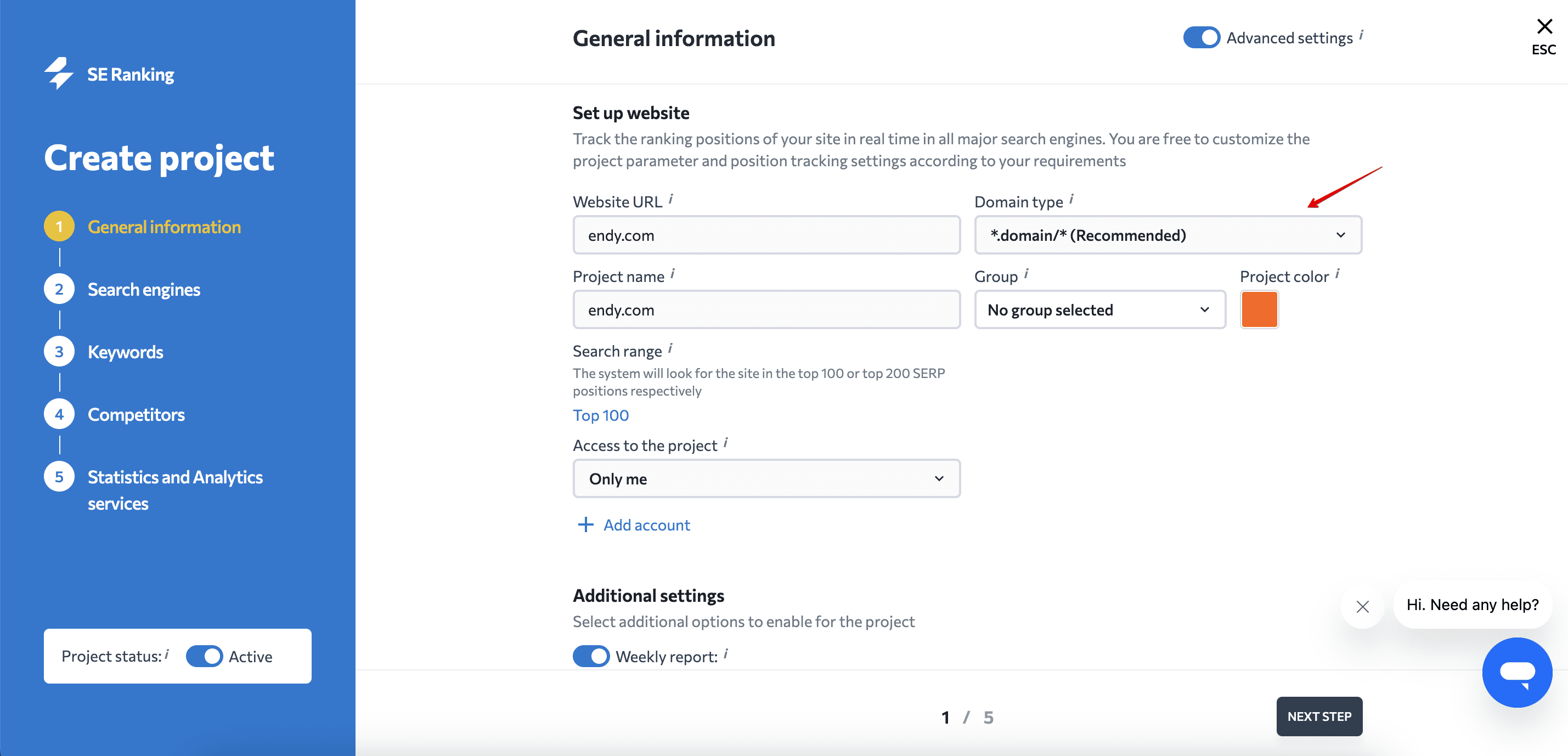
This will ensure that the service considers all of your subdomains’ pages when calculating your SERP rankings.
To track each subdomain separately, create a separate project for each subdomain. Enter the subdomain address into the “Website URL” field and choose the:
- *.domain/* domain type to track this subdomain and its subdomains (4th level and further, like in it.website.com, support.it.website.com, blog.it.website.com, etc.).
- domain/* domain type to track only this subdomain.
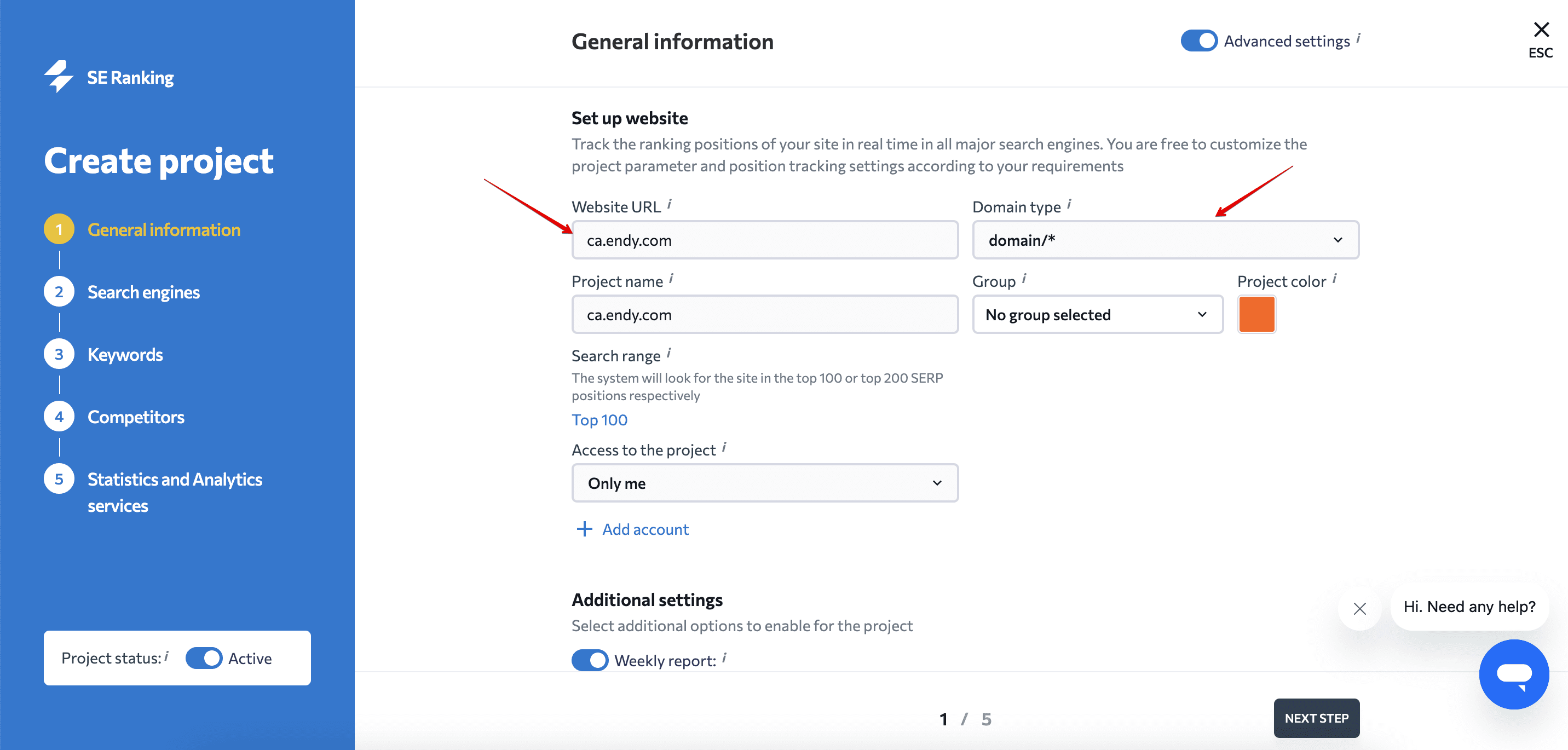
Another handy tool is Google Search Console. Even if you’re already using it for your main site, you must also add it to GSC since the domain is a separate project. This process is similar to adding a website to GSC.
As for Google Analytics, it will track the entire website, but you can set goals and filters and get reports for your subdomains. Here’s how to set it up:
- Set the cookieDomain to auto to store data about users and their sessions.
- Add subdomains to the referral exclusion list to prevent GA from considering your subdomain referrers as new every time they hop from one subdomain to another.
You can also link your subdomain’s GSC and GA to your SE Ranking project to monitor its performance.
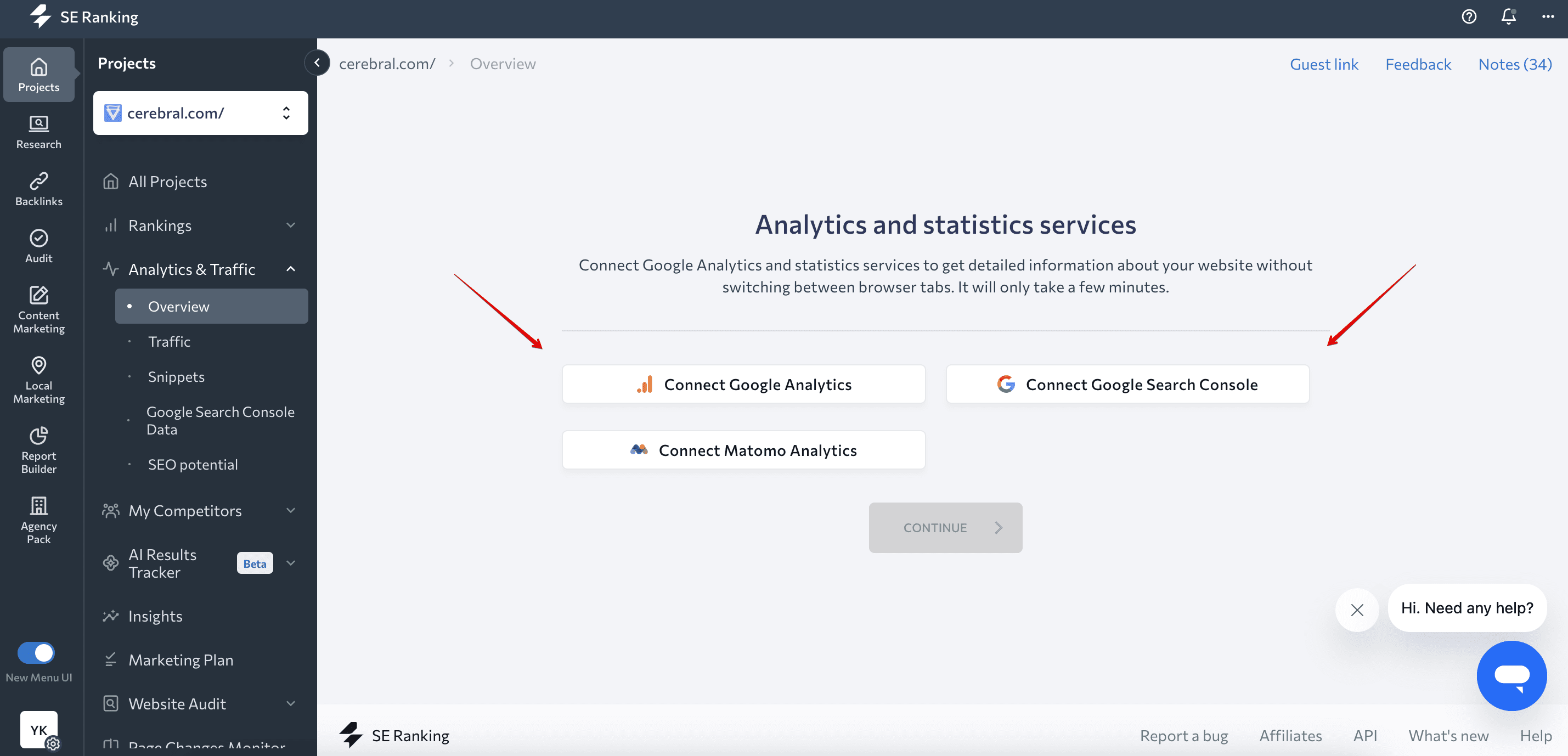
Are subdomains good or bad for SEO?
Incorporating subdomains into your SEO strategy can be a game-changer when it comes to boosting online visibility, getting more traffic, and establishing a solid online presence. However, it’s vital to understand the impact of subdomains on your SEO and when to use this strategy.
While optimizing your subdirectories can improve your website and overall SEO performance, optimizing subdomains has no effect as long as you play fair. If your subdomain violates search engine guidelines, your main domain can suffer. Here are some actions Google can take in response:
- Label the whole domain as malicious if you have malware subdomains.
- Penalize your domain if you try to push your subdomains/domain in search for the same queries. This can also lead to keyword cannibalization.
- Decrease the rankings of both your domain and subdomain whenever the subdomain publishes duplicate content.
Here are some SEO benefits of subdomains:
- Target keywords and audiences that your main domain doesn’t cover.
- Organize your website better.
- Provide visitors with a more user-friendly site experience.
All of this can boost rankings and drive more traffic to your subdomain, helping you reach your SEO goals.
Why create subdomains for SEO?
Let’s look at some instances where you’ll need to create subdomains.
To separate content by region
If you own franchise business with offices in different countries or cities, promoting certain items or services in specific areas is key. Subdomains help split local keywords and links for different regions to prevent them from overlapping and competing.
Subdomains can also be useful for informational websites. For example, Craigslist.org has subdomains for each city it publishes ads for:

Wikipedia even displays content for each country on specific subdomains:

Google prefers websites that have ccTLD – Country-Code Top-Level Domains – with each regional version put on a separate domain:

However, each domain needs to be bought separately, which can get expensive.
Before choosing between regional subdomains or country-specific domains, weigh the pros and cons, inclusing ease-of-implementation and ongoing maintenance.
To distinguish content by its purpose, category, and volume
Creating a subdomain for SEO can be an excellent strategy for splitting different types of content on your website. You can create subdomains to organize various topics or product categories, improving your website’s structure and user experience. Subdomains make it easier to manage website content and track data more effectively for each section.
Here’s how it works with WooCommerce, a customizable ecommerce platform for small and medium-sized businesses. WooCommerce has multiple subdomains that split the content into different parts according to its purpose. For instance, WooCommerce has:
- themes.woocommerce.com/—subdomain with examples and demos of ecommerce site themes..
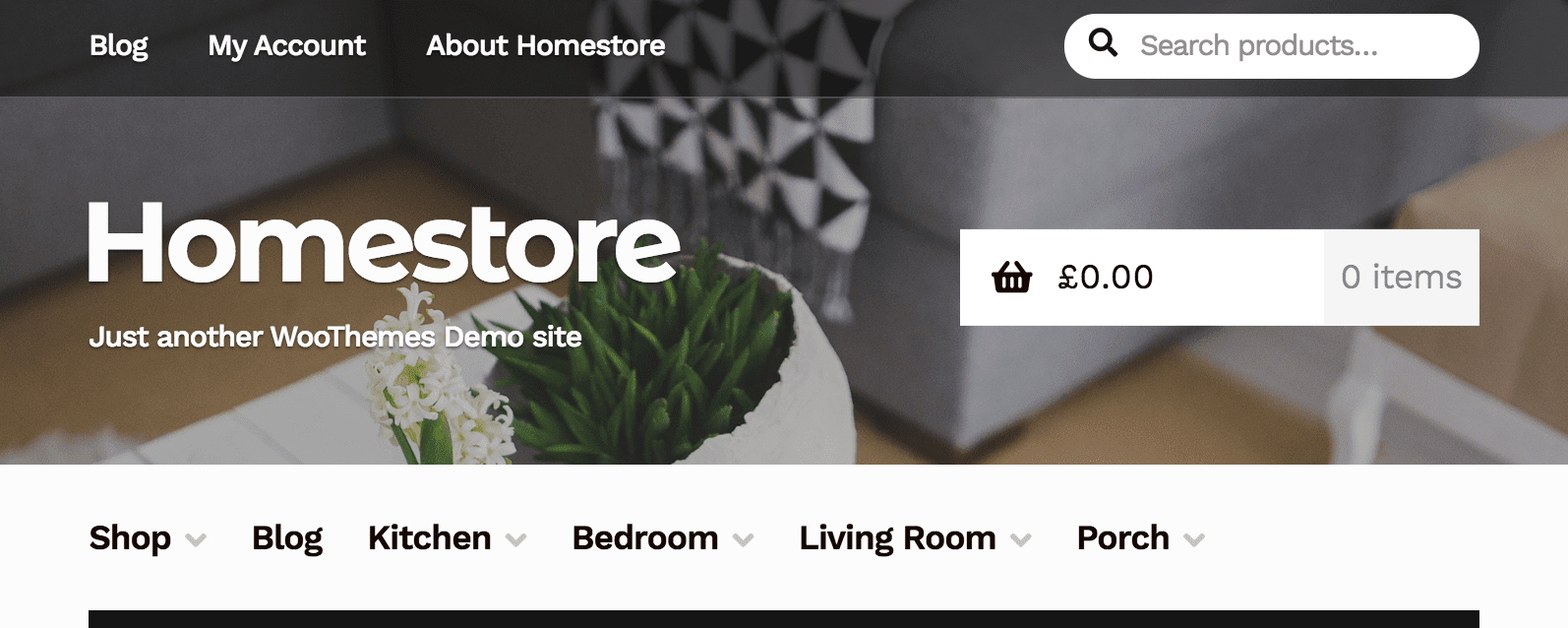
- partners.woocommerce.com/English/—subdomain for WooCommerce’s partners where they can sign up for the WooExpert program and get leads, sales, and training.

- developers.woocommerce.com/—subdomains with resources for those who want to develop with WooCommerce.

These subdomains have different interfaces and purposes.
You may need to segregate your help section (help.instagram.com), store (store.nytimes.com), blog (blog.hubspot.com), cloud-based platform for SEO (online.seranking.com), etc.
You can also use subdomains for SEO to split product categories. Ecommerce websites or retailers often offer multiple categories of items for sale, which can be managed by the different teams responsible for each category.
Lastly, subdomains can categorize a massive volume of content on big media platforms.
If you’re unsure about how to treat your www subdomain, check out this guide on www subdomains for some helpful tips.
To divide brand offerings
Subdomains can help brands when they want to expand their range of services. Use them to establish a separate identity for your new line of business without diluting your main brand.
This is particularly important when a business has positioned itself as an expert in a specific area. If it decides to expand in a new direction that is not directly related to its primary offering, promoting the new services alongside the old ones could damage the main brand. In this scenario, using a subdomain can help create a new identity for the new services while allowing the main brand to focus on its core offering.
This is a common strategy among different companies, including well-known brands. For example, Amazon has a separate subdomain for its web services business (aws.amazon.com), while Google has a subdomain for its cloud services (cloud.google.com).
To test new things on your website
One of the best things about subdomains is that you can use them to test a new design or CMS.
Testing a new CMS won’t influence the main domain’s work in any way, so you can launch a new engine for your subdomain, test all of its features, and learn how applicable it is to your website’s functionality, all without risk. You can also tune the CMS to any special requirements had byyour hosting service. Once all tests have been completed, you can switch to the new CMS on the main domain. This is when your website can function without interruptions, and generate traffic and revenue.
Don’t forget to bar search bots and users from accessing your test subdomains. Otherwise, bots will scan and index them while users access and use them. Your options here include:
- Adding a special Robots <META> tag to the page’s header
<meta name="robots" content="noindex">
- Setting up your X-Robots-Tag HTTP header response as noindex or none
HTTP/1.1 200 OK (...) X-Robots-Tag: noindex (...)
You can also set a website access password and add detectives to your robots.txt file:
User-agent: * Disallow: /
These actions also block audit services from accessing your site, meaning most automated audits won’t work on test subdomains.
However, you can give SE Ranking’s bot exclusive permission to scan your closed domains. To ensure everything works fine on your testing domain before showing it to search engines, try using our Website Audit tool.
To give the parser access to your test domains, enter your login and password into the parser settings:
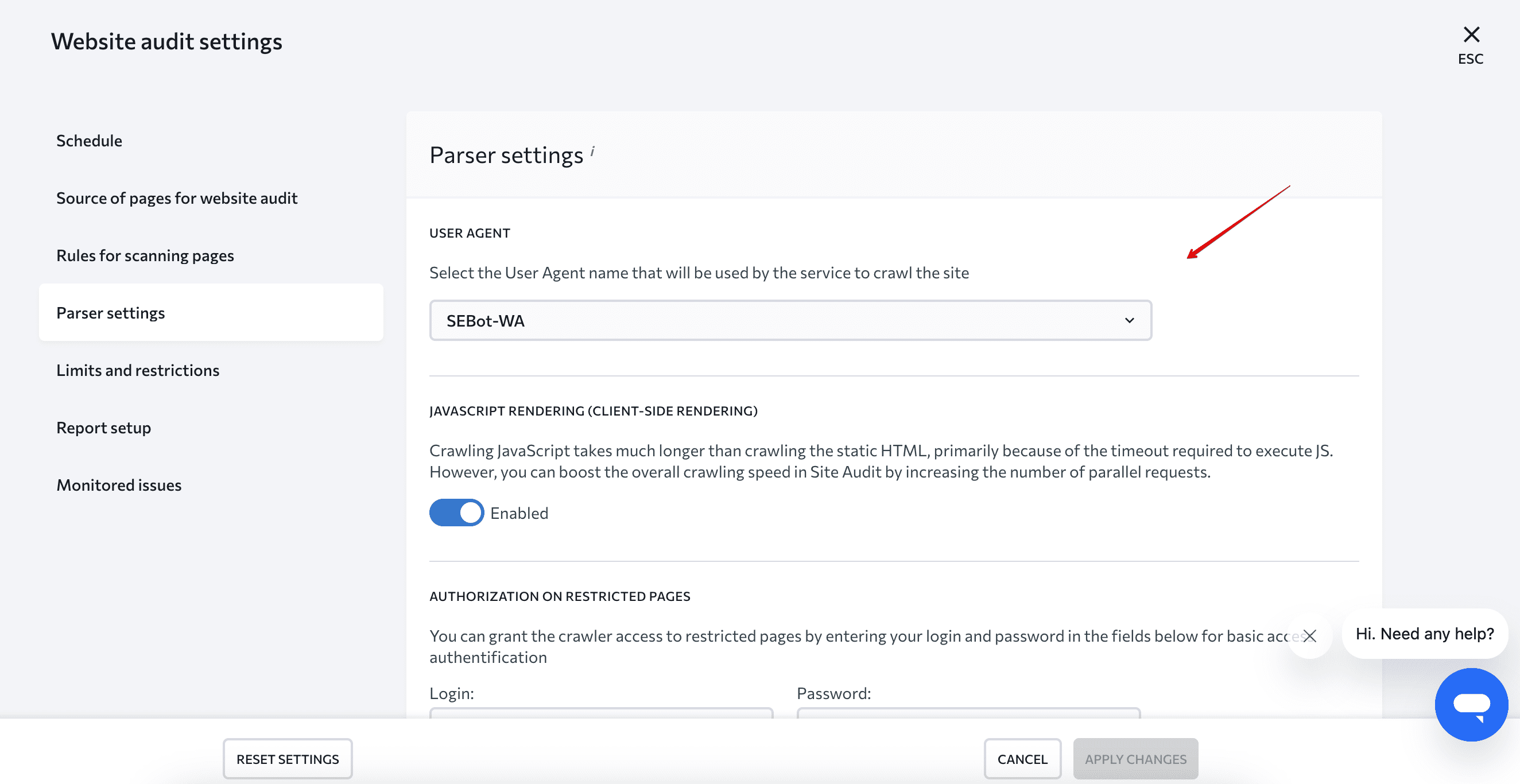
This gives you the chance to catch potential issues before Google spots them.
Final thoughts
In SEO, everything has a purpose, and creating subdomains is no exception. When done right, they showcase your brand’s expertise, increase your authority, and help you reach new audiences. The tips in this article will help you optimize your subdomain for better SEO performance. Follow them to get the most out of your subdomains!

